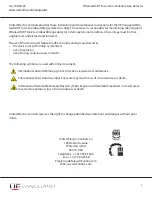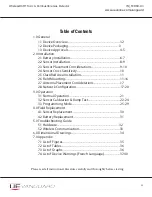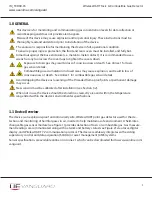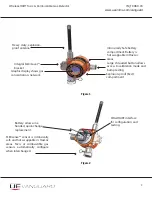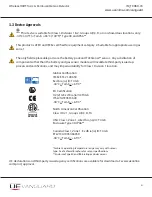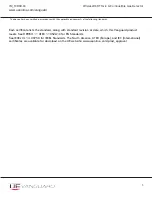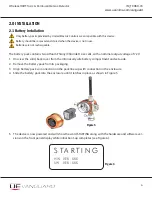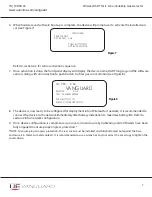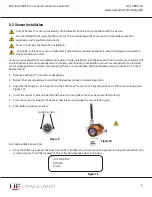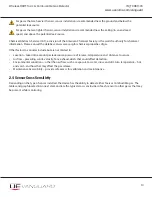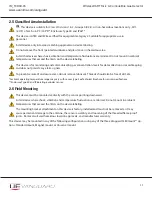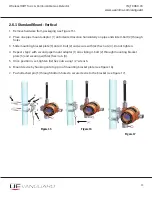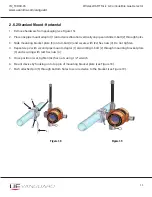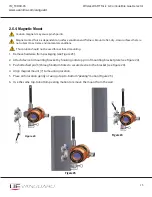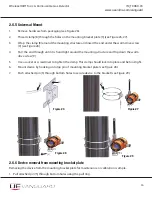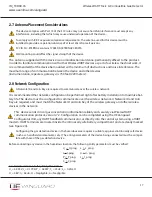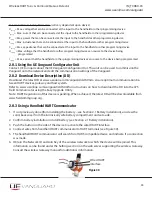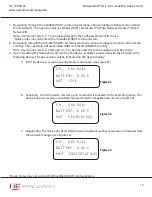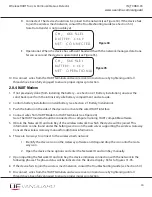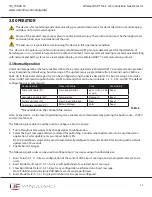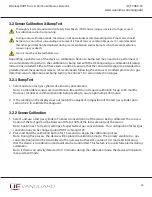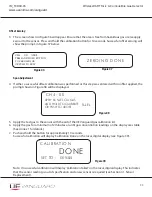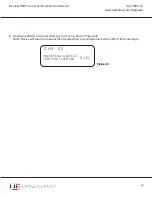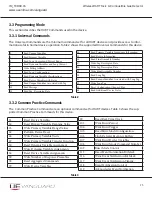
WirelessHART Toxic & Combustible Gas Detector
IM_TCD60-01
www.ueonline.com/vanguard
10
Chemical Abstracts Service (CAS), a division of the American Chemical Society, is the world’s authority for chemical
information. Please consult the database at www.cas.org for chemical properties of gas.
Other factors to consider include but are not limited to:
• Location – takes into account gas leak source, pressure of release, temperature, and distance to sensor.
• Air flow – prevailing winds, velocity, fans, exhaust ducts that could affect detection.
• Environmental conditions – other than air flow; such as exposure to water, snow, and dirt. Also temperature – hot
and cold – and how that may affect the gas release.
• Maintenance Accessibility – provide safe access for calibration and maintenance.
2.4 Sensor Cross Sensitivity
Depending on the type of sensor installed, the device has the ability to detect either Toxic or Combustible gas. The
tables and graph located in Annex 1 demonstrate the typical cross sensitivities of each sensor to other gases that may
be present while monitoring.
For gases that are heavier than air, sensor installation is recommended near the ground and below the
potential leak source.
For gases that are lighter than air, sensor installation is recommended near the ceiling (in an enclosed
space) and above the potential leak source.


